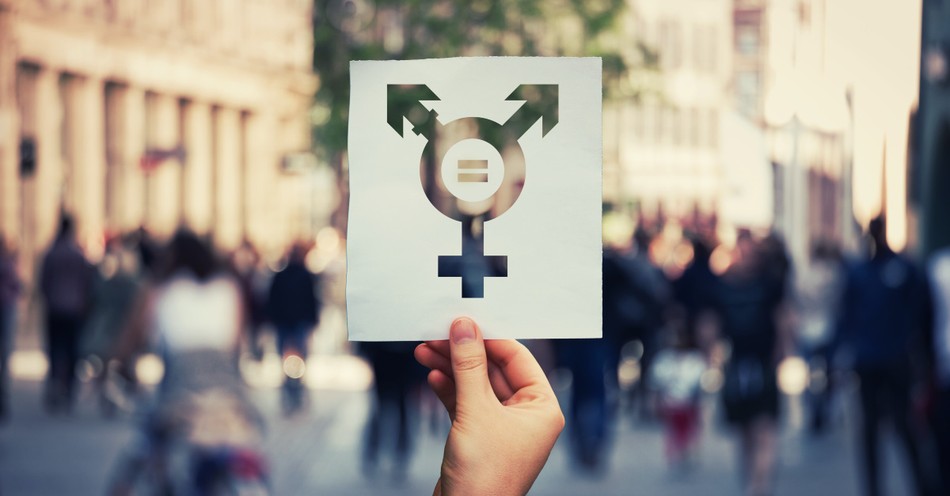Epidemics demand explanation. When a hospital receives a sudden influx of patients with similar symptoms, doctors look for a shared cause, contagion, or incident. However, for some reason, a public health crisis that emerged in recent years has not triggered a large-scale investigation into causes. In fact, we are hardly allowed to acknowledge it as a problem.
At her Substack, Generation Tech, psychologist and author Jean Twenge explained a new paper she and two colleagues published on the explosion of gender confusion. Analyzing government data on nearly two million adults since 2014, Twenge and her colleagues found that transgender identification in the general population has increased by nearly 70%. For Americans 18-25, trans identity skyrocketed from just over half a percent of the population in 2014 to over 3% of the population in 2023. In other words, in less than a decade, the share of American young people identifying as transgender quintupled, with the vast majority of that increase among women and girls.
The story that has been told to explain this, one the public has been almost required to believe, is that gender expression is an expression of one’s authentic self, probably something people are born with, and finally we are a culture that allows people to be their true selves. However, if that is the case, why is this epidemic occurring overwhelmingly in one age bracket and one sex? The usual rationalizations that there is less social stigma and more diagnosis and treatment cannot explain these disparities.
The phenomenon that does explain them is one about which Twenge has written extensively. Social contagion, the spread of disorders among peers consciously or unconsciously imitating one another, often explains the measurable spread of mental health conditions among vulnerable populations. Factors known to fuel social contagion today are digital devices and social media.
When rates of mental illness, smartphone and social media use, and transgender identification are traced, the graphs align with eerie precision. One particular year, in fact, stands out. 2013 was the first year most Americans owned a smartphone. It was also the year adolescent mental health problems began to noticeably climb. For example, rates of depression and anxiety rose by nearly 50% in the decade following 2013, and suicide among teen girls more than doubled. That same year, transgender identity among teenage girls also began its epidemic spread.
Social contagions are often accompanied by comorbidities or conditions not caused by the contagion but that often make patients more vulnerable to it. In a Breakpoint Forum earlier this year, Dr. Stephen Grcevich, president and founder of Key Ministry, shared a bevy of statistics that showed a troubling connection between disability and gender confusion.
For example, a 2020 analysis by the pro-LGBT Human Rights Campaign found that in every category of disability, including cognitive, mobility, and sensory, transgender adults were overrepresented. A 2020 study in the UK found that transgender-identified persons are over five times more likely to have autism, over six times more likely to have ADHD, almost four times more likely to have depression, five times more likely to have bipolar disorder and OCD, and over 28 times more likely to have schizophrenia.
The politically correct explanation for these data points is that transgender identity is innate and immutable and just happens to occur more readily among young people with smartphones, especially women and those with disabilities. The far more likely explanation is that these groups are, in different ways, more susceptible to social contagion than the general population.
Dr. Grcevich favors the second, noting how many young people with disabilities that he works with experience other forms of body dysmorphia, like anorexia. These individuals may cling to dysmorphia with intense devotion as a way to make sense of suffering that actually arises from their comorbidity. When they are told that maybe the reason for this suffering isn’t disability but the fact that they were born the wrong sex, it’s a lie with sinister appeal.
In the end, the explosive epidemic of people identifying as transgender is a real phenomenon, and it is not because more people are “coming out of the closet.” It is a social contagion fueled by digital tech that predictably and disproportionately attacks certain groups of vulnerable people.
Any adequate response to this kind of mental health crisis must be multipronged and cannot resort to quickly administering “treatments” that are irreversibly damaging. The first non-negotiable step is to give up on this myth that transgender identity is innate. It is far more often caught like a virus.
If our society continues to refuse to address this now obvious and manifest fact, more vulnerable people will suffer unnecessarily.
Photo Courtesy: ©Getty Images/Bulat Silvia
Published Date: October 17, 2024
John Stonestreet is President of the Colson Center for Christian Worldview, and radio host of BreakPoint, a daily national radio program providing thought-provoking commentaries on current events and life issues from a biblical worldview. John holds degrees from Trinity Evangelical Divinity School (IL) and Bryan College (TN), and is the co-author of Making Sense of Your World: A Biblical Worldview.
The views expressed in this commentary do not necessarily reflect those of CrosswalkHeadlines.
BreakPoint is a program of the Colson Center for Christian Worldview. BreakPoint commentaries offer incisive content people can't find anywhere else; content that cuts through the fog of relativism and the news cycle with truth and compassion. Founded by Chuck Colson (1931 – 2012) in 1991 as a daily radio broadcast, BreakPoint provides a Christian perspective on today's news and trends. Today, you can get it in written and a variety of audio formats: on the web, the radio, or your favorite podcast app on the go.




